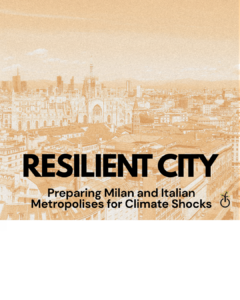In a rapidly urbanizing world, cities have become a hot spot for climate action.
According to the United Nations, in 2020, 56% of the world’s population lived in urban areas, and this number is projected to increase to 68% by 2050.
Urban sprawl can be attributed to several factors, including rural-urban migration, natural population growth, and economic development. Many people move to cities in search of better economic opportunities, and access to education, healthcare, and other services. However, the rapid growth of urbanization has also led to several challenges, such as environmental degradation, social inequality, and inadequate infrastructure.
To address these challenges, it is crucial to plan and manage urban growth sustainably, ensure equitable access to basic services and amenities, and strengthen urban resilience to shocks and stresses.
What are sustainable cities?
Sustainable cities are urban areas designed to balance economic growth with social and environmental responsibility, ensuring that the needs of both current and future generations are met.
Cities are significant contributors to environmental issues such as greenhouse gas emissions, air and water pollution, and loss of biodiversity. Sustainable cities aim to reduce these negative impacts by promoting the use of renewable energy sources, reducing emissions, and minimizing waste. They also prioritize sustainable transportation options such as walking, cycling, and public transport, as well as the use of green spaces and urban agriculture.
From an economic point of view, sustainable cities promote economic growth by creating jobs, encouraging innovation, and attracting investment. By investing in sustainable infrastructure and practices, cities can reduce costs associated with environmental damage and resource depletion.
In addition, sustainable cities prioritize social equity, aiming to provide access to essential services such as healthcare, education, and housing, regardless of socioeconomic status, ethnicity, or gender. Public participation and engagement in decision-making processes are prioritized to ensure that the needs and perspectives of all stakeholders are considered.
Another important factor to consider is resilience: sustainable cities are better equipped to withstand and recover from natural disasters and other shocks such as pandemics, economic crises, and social unrest. By investing in resilient infrastructure, cities can reduce the impact of these events on people’s lives and the economy.
Overall, sustainable cities are designed to promote the well-being of their residents and the planet, creating a livable and prosperous urban environment.
Are sustainable cities possible?
Smart cities around the world have already actively moved towards greener urban ecosystems and better environmental protection.
Copenhagen has set a goal to be carbon-neutral by 2025 and continuously invests in green tech and a network of bicycles. Amsterdam has implemented a comprehensive plan to reduce car use and promotes cycling and walking. Stockholm, Berlin, Portland, San Francisco, Cape Town, Helsinki, Vancouver, and Reykjavik are all possible examples of the many cities that have already taken significant steps toward becoming more sustainable.
Therefore, sustainable cities are not just a futuristic dream. They represent a possible solution for growing industrialization and might become essential in the quest to reverse global climate change.
By Sara Conte
Sources:
https://www.envirobond.com/municipalities/possible-sustainable-city/
https://www.digi.com/blog/post/sustainable-city
https://www.scientificamerican.com/article/can-cities-be-sustainable/
https://www.eea.europa.eu/en/topics/in-depth/urban-sustainability




